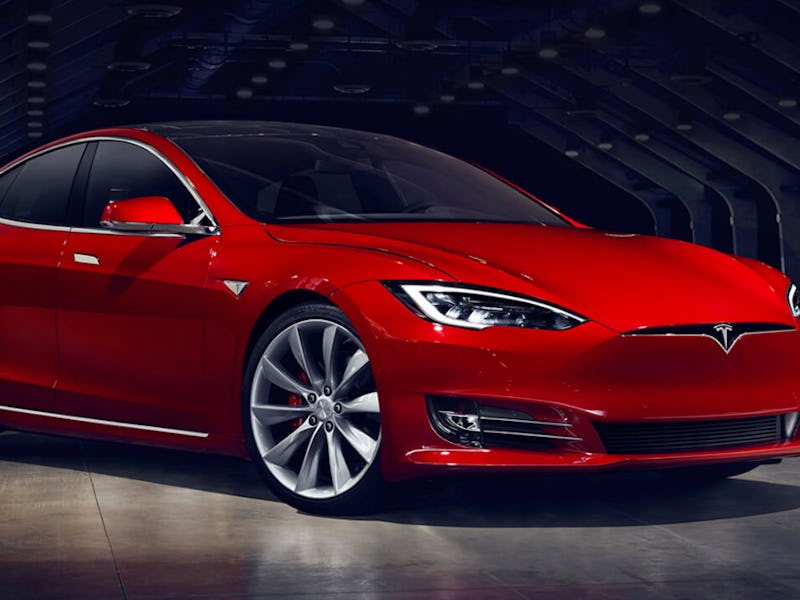Tesla may be on the verge of detailing its jump into the next era of driving. The company is scheduled to host an autonomy investor day on April 22, where it’s expected to provide more information about its plans and technology for self-driving cars. Ahead of the big day, CEO Elon Musk has been ratcheting up the rhetoric.
“To me, right now, this seems game, set and match,” Musk declared in an interview with MIT researcher Lex Fridman released on Sunday. “I could be wrong, but it appears to be the case that Tesla is vastly ahead of everyone.”
The company announced back in October 2016 that its vehicles will start shipping with the necessary cameras and sensors to support fully autonomous driving, through a future software update and computer upgrade. Musk suggested that this combination could boost the value of its cars.
“An autonomous car is arguably worth five to 10 times more than a car which is not autonomous,” Musk said. “Depends what you mean by long term but let’s say at least for the next perhaps five or 10 years.”
It’s easy to see why investors may be excited about this prospect.
Tesla Investor Day: What the Company May Announce
Tesla first announced its autonomy investor day on April 3:
Tesla is making significant progress in the development of its autonomous driving software and hardware, including our FSD computer, which is currently in production and which will enable full-self driving via future over-the-air software updates. With a number of very exciting developments coming in the weeks and months ahead, Tesla will host investors on the morning of April 19th at our headquarters in Palo Alto to provide a deep dive into our self-driving technology and road map.
Investors will be able to take test-drives to experience our Autopilot software first-hand, including features and functionality that are under active development. Investors will also hear directly from Elon Musk, as well as VP of Engineering, Stuart Bowers, VP of Hardware Engineering, Pete Bannon, and Sr. Director of AI, Andrej Karpathy.
The following day, Tesla rescheduled the event from Friday the 19th to Monday the 22nd “based on investor feedback, and in order to accommodate as many attendees as possible.” All other details remained the same.
Musk subsequently suggested that the event will offer something exciting for investors:
Tesla Investor Day: Robo-Uber Could Come Out from the Shadows
The event may also prove an opportunity to reveal more details about Tesla’s plan to set up its own competitor to Uber and Lyft, a goal first announced in 2016. The company plans to enable users to rent out their cars while not in use, around 90 percent of the day. A camera inside the car will record passengers for security. Owners could manage their car through a smartphone app. Musk claimed on April 5 that this feature will be explained in-depth at the event.
Beyond utility value, this could also help Tesla vehicles transform into appreciating assets. Analysis from Loup Ventures in March 2018 showed an owner could make $6,892 per year. With a 10 percent cut to Tesla, that gives $574 per month, higher than the average lease payment in the United States. Munster estimates the firm could claim 10 percent of the American rideshare market by 2023 to earn $2 billion to $6 billion in high-margin revenue.
This feature has become an increasingly prominent feature of Tesla’s plans. When the company started offering leases for the Model 3 with a small down payment, Tesla noted that owners would not be able to purchase the car at the end of the lease as it will be used for the company’s autonomous taxi fleet.
Tesla Investor Day: Clarity on Release Date and Pricing
Tesla unveiled “Hardware 2” in October 2016 as a replacement to the MobilEye-powered suite of sensors. While Tesla originally focused on developing an in-house version of Autopilot, the semi-autonomous driving mode that requires the user to stay focused on the road, the long-term goal was to use the eight cameras, 12 ultrasonic sensors and other hardware to one day enable point-to-point autonomous driving. Unlike systems like Waymo and Uber, Tesla does not use lidar to measure the distance to objects.
The company plans to replace the existing Nvidia Drive PX 2 computer with its own chip, developed by a team led by iPhone 5S processor developer Pete Bannon. Where the Nvidia Drive PX 2 processes 20 frames per second, the new chip processes 2,000 per second with full redundancy and fail-over. The chip is now in production, but a release date is unclear.
Tesla sells full self-driving as a software unlock for $5,000 at the time of purchase or $7,000 thereafter. Musk stated last week that these prices will rise from May 1 and increase “substantially” over time.
Musk claimed that full, fall asleep at the wheel autonomy could arrive by the end of next year. With so many unknowns around Tesla’s plans, the April 22 event could provide some much-needed clarity about how these features will roll out and when.
